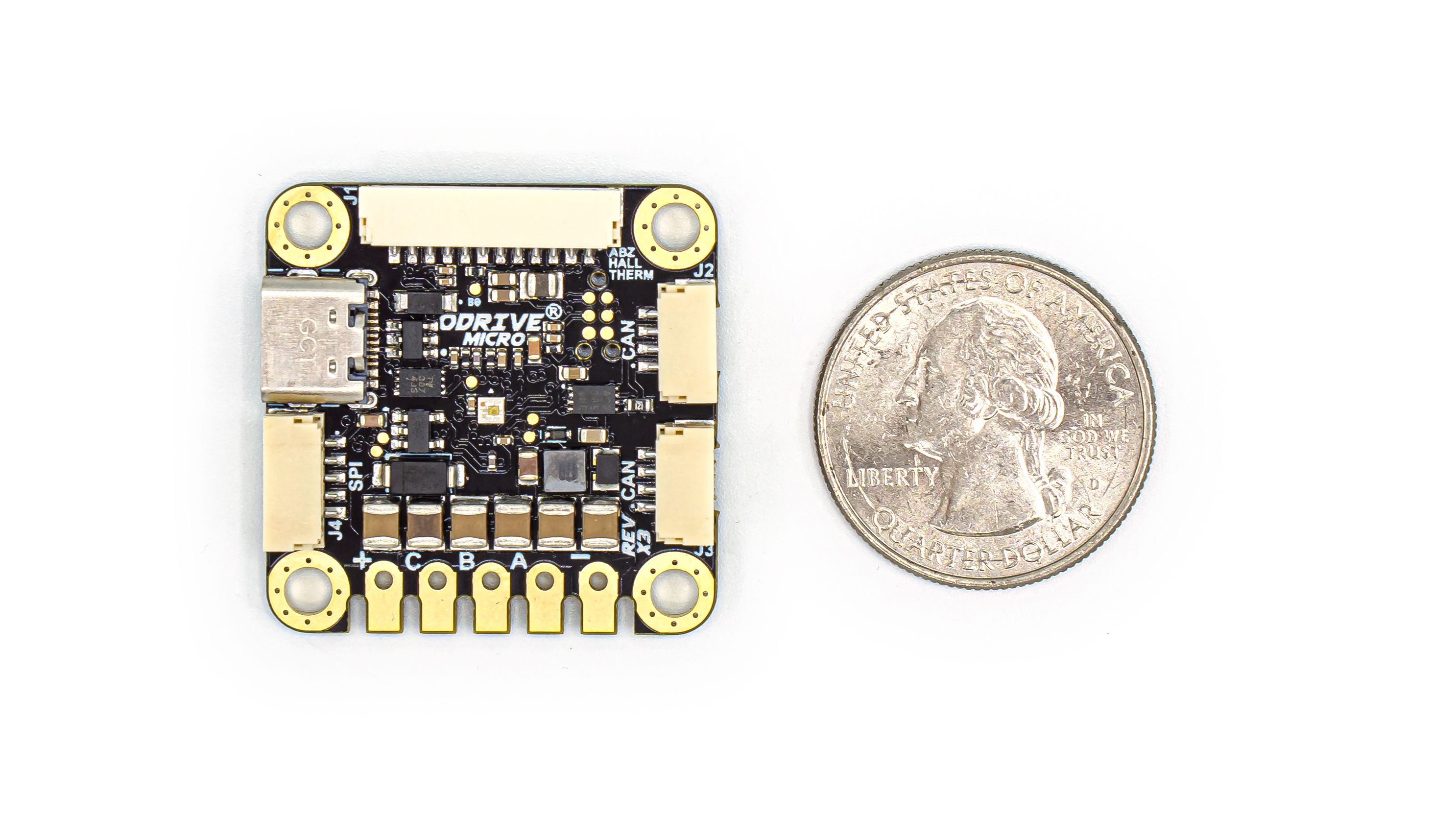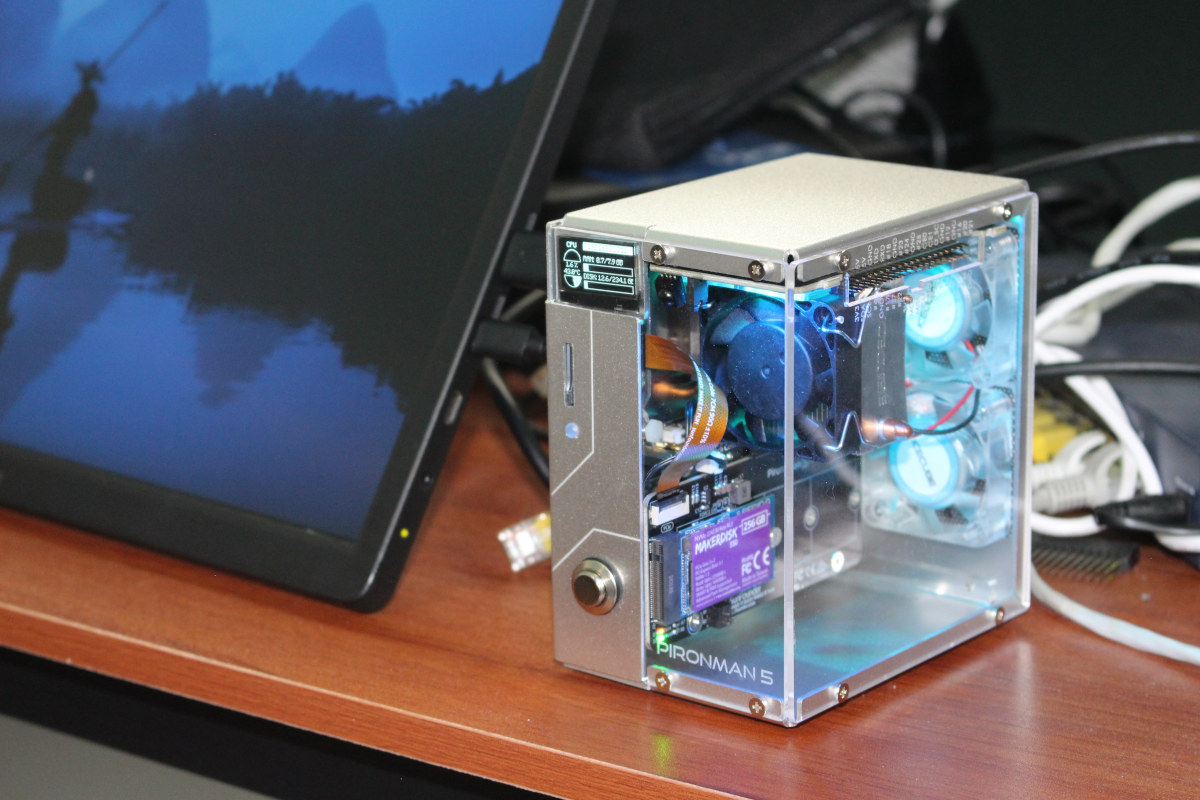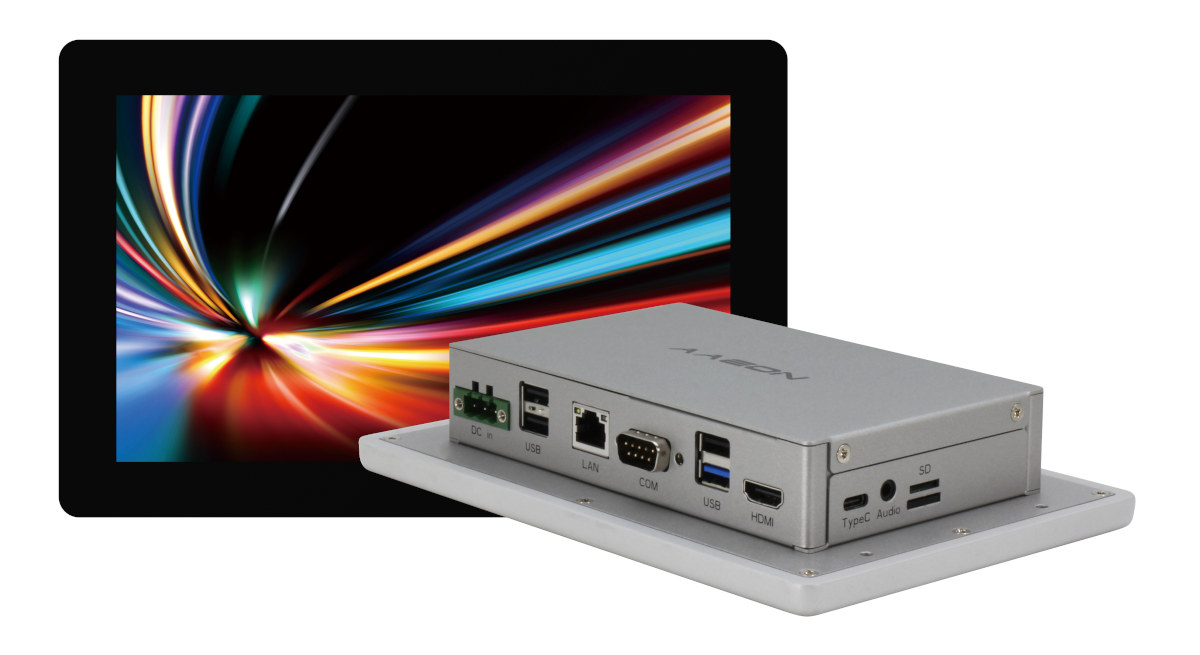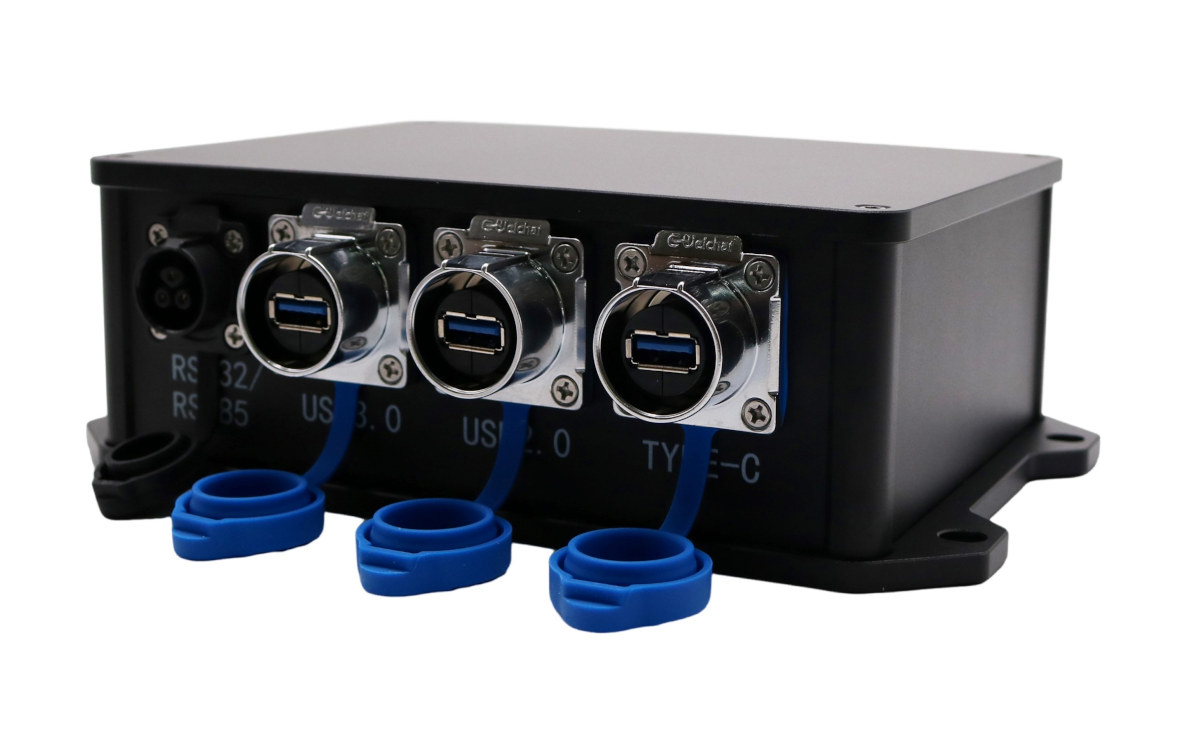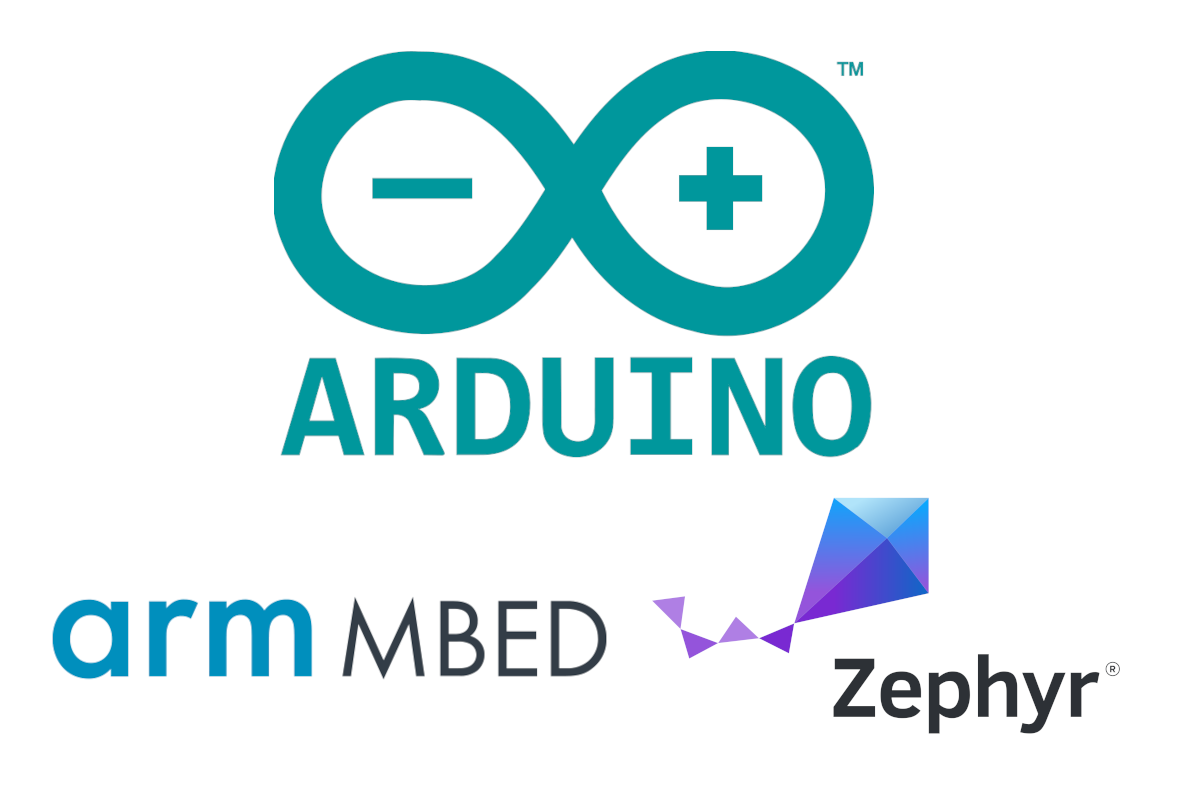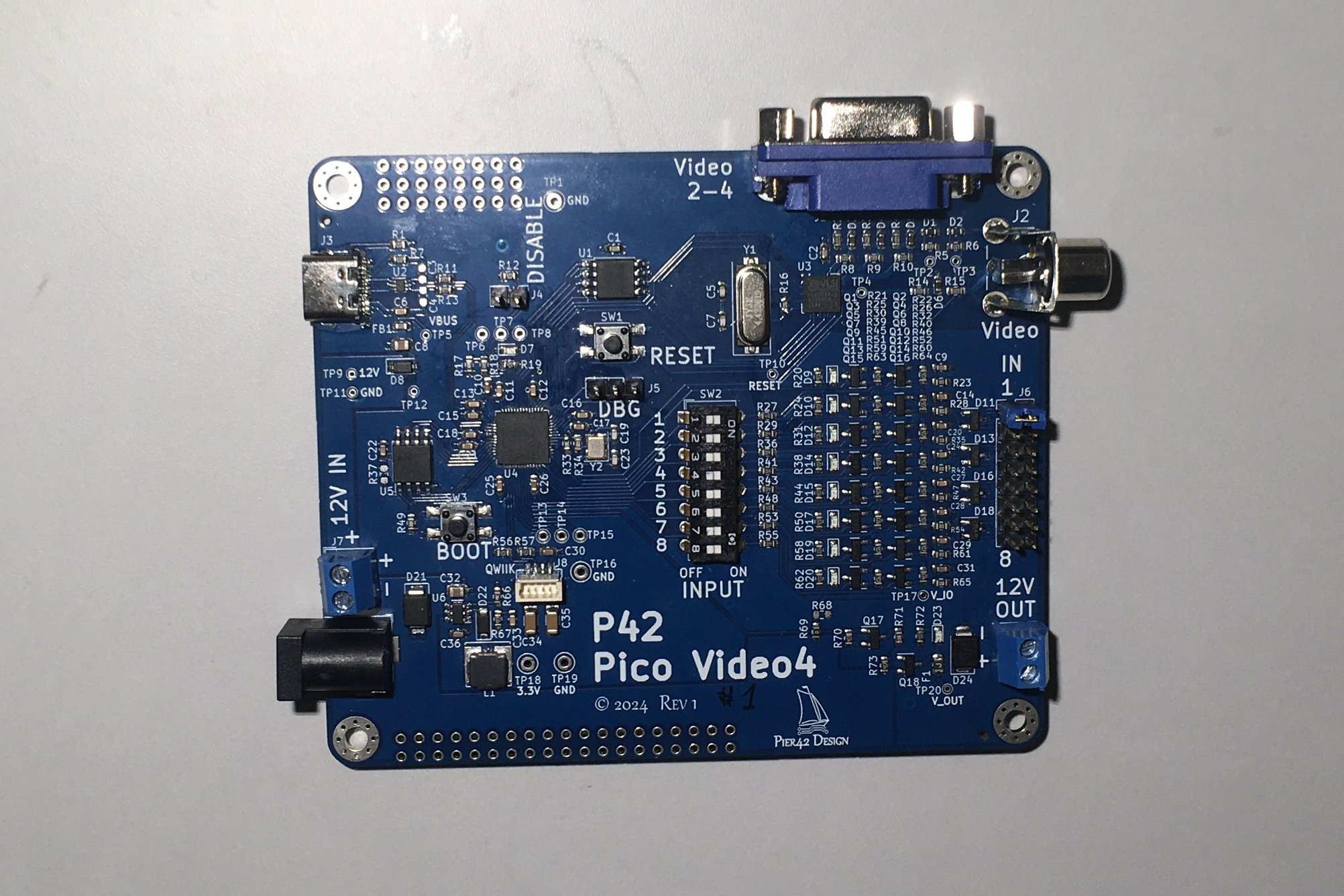ODrive Micro is a high-performance servo motor drive from ODrive Robotics that comes in an ultra-compact, 32 x 32mm form factor. The controller provides up to 100W continuous power for driving brushless servo motors. The ODrive Micro is the latest in a series of motor controllers from ODrive and builds on the company’s established software and hardware ecosystem. This includes support for CAN Bus, programming libraries, and a web-based graphic user interface for easy and intuitive setup. The Micro features a CAN interface for daisy-chaining other controllers and an onboard 12-bit magnetic encoder for direct mounting without needing an external encoder. It also offers the option to mount hall, quadrature, and SPI external encoders via the J1 header on the board. The ODrive Micro is aimed at robotics applications where space is premium, including hobbyist and professional use. It is similar to the Wukong 2040, ClearCore, and the Serial Bus […]
Review of Pironman 5 mini PC case for the Raspberry Pi 5 SBC
SunFounder has sent me a review sample of the Pironman 5 tower PC case for the Raspberry Pi 5. I had already reviewed the Pironman case for Raspberry Pi 4 last year, so I’ll do something similar this time around with the new Pironman 5 case adding support for NVMe SSD using the PCIe interface from the Pi 5 SBC. The Pironman 5 review will include unboxing and an assembly guide, followed by software installation and features testing (e.g. OLED display, RGB LED control, remote control. soft power off, etc…), before testing the cooling efficiency of the device with some benchmarks. Pironman 5 unboxing The Pironman 5 comes in a package that will be smaller than most people expect. The main features are listed on the side with 5V/5A power input, a 0.96-inch OLED, a tower cooler, M.2 NVMe SSD support, an IR receiver, a CR1220 battery (included), four RGB […]
AAEON ACP-1078 – A Rockchip RK3568-powered 7-inch touchscreen panel PC for manufacturing and logistics
AAEON ACP-1078 is a 7-inch touchscreen panel PC powered by a Rockchip RK3568 quad-core Cortex-A55 AI SoC with 12V to 24V DC input, and an IP65-compliant aluminum front bezel suitable for manufacturing and logistics use cases. The fanless panel PC ships with up to 4GB RAM and 16GB eMMC flash and offers dual GbE networking, HDMI output, five USB ports, two COM ports, a microSD card slot, and a 3.5mm audio jack. AAEON ACP-1078 panel PC specifications: SoC – Rockchip RK3568 CPU – Quad-core Cortex A55 processor at up to 2.0 GHz GPU – Mali G52 GPU with support for OpenGL ES 1.1/2.0/3.2, OpenCL 2.0, Vulkan 1.1 VPU 4Kp60 H.264, H.265, VP9, 1080p60 MPEG-4/-2/-1, VP8, and VC1 video decoder 1080p60 H.264/H.265 video encoder AI accelerator – 0.8 TOPS NPU System Memory – 2GB or 4GB LPDDR4 Storage 16GB eMMC flash MicroSD card socket mSATA socket Display 7-inch WSVGA (1024 x […]
Flipper Zero hacking tool gets CAN bus add-on board for vehicle diagnostics and security research
Electronic Cats’ Flipper Add-On CANBus is a new add-on board for the Flipper Zero adding CAN bus communication to the popular wireless hacking tool. Built around the MCP2515 CAN controller chip this add-on card communicates with the Flipper Zero through an SPI interface. It allows users to sniff, send, and log CAN bus packets directly from the Flipper Zero, which means now you can analyze and manipulate CAN bus traffic for vehicle diagnostics, security research, and DIY projects. Previously we have seen Flipper Zero add an RP2040-powered video game module, and before that, we noted the developers launched their own app store with open-source apps. Additionally, we have written about Flipper Zero alternatives such as the M1 multitool so feel free to check those to know more about those solutions. Electronic Cats Flipper Add-On CANBus specifications Compatibility – Flipper Zero CAN Controller – Microchip MCP2515 CAN bus controller with SPI […]
IP68-rated Rockchip RK3588 embedded mini PC works underwater
Mekotronics R58X-IP68 is a Rockchip RK3588-powered embedded mini PC with an IP68 ingress protection rating that makes it waterproof and even allows it to run submerged underwater. We’ve previously covered IP68 or IP67-rated hardware platforms like IoT gateways, thermal cameras, telemetry modules, and more. Those often rely on M12 or M8 connectors for waterproofness, but the Mekotronics R58X-IP68 relies on regular connectors housed in a waterproof socket and cable. Mekotronics R58X-IP68 specifications: SoC – Rockchip RK3588 CPU – Octa-core processor with four Cortex-A76 cores @ 2.4 GHz, four Cortex-A55 cores @ 1.8 GHz GPU – Arm Mali-G610 MP4 GPU VPU Video Decoder 8Kp60 H.265 VP9, AVS2 8Kp30 H.264 AVC/MVC 4Kp60 AV1 1080p60 MPEG-2, MPEG-1, VC-1, VP8 Video Encoder – Real-time H.265/H.264 video encoding up to 8Kp30, also usable as a multi-channel encoder in parallel (at lower resolution) AI Accelerator – 6 TOPS NPU System Memory – 4GB, 8GB, or 16GB […]
Arduino to switch from Arm Mbed to Zephyr RTOS
Following Arm’s decision to stop supporting Mbed from July 2026 onwards, Arduino has now decided to use Zephyr RTOS instead of Arm Mbed for Arduino boards that rely on the latter including Arduino GIGA, Arduino Nano 33 BLE, Arduino Nano RP2040 Connect, as well as Arduino PRO boards/solutions such as the Portenta, Nicla, and Opta families. Note that Arduino UNO, MKR, and Nano families are not impacted by the change since their Arduino Core implementation does not rely on Mbed. The change is not going to happen overnight as software development takes time, and Arduino plans to release the first beta based on ZephyrOS by the end of 2024. and a rollout for various boards starting in 2025 long before Arm Mbed is phased out for good. Arduino is not new to the Zephyr project as the company became a Silver member last year, and they were aware that Arm […]
Raspberry Pi RP2040-based Pico Video4 display board features 4 composite video outputs
The Pico Video4 Display is a Raspberry Pi RP2040-powered board that supports up to 4 analog composite video display interfaces with dedicated frame buffer memory accessible via SPI. The four video outputs are sent out through an RCA connector and a VGA DB15-HD connector that uses the red, green, and blue channels to create a composite video signal. The Pico Video4 Display is based on the Raspberry Pi RP2040 microcontroller chip and the VLSI VS23S040 four-megabit static RAM device with a video display controller that can output NTSC, PAL, and VGA video from the memory array. It provides the composite video outputs with a dedicated frame buffer and other hardware. This ensures that the RP2040’s limited processing power and memory are not hogged up in generating the video signal, leaving room for other major tasks. It has 8 inputs that are voltage-compatible to the input voltage, from 5V to 12 […]
The Blette Stick relies on Bluetooth 5.0 LE for off-grid messaging with up to 1.1km range
The Blette Stick is a Bluetooth 5.0 LE USB-C dongle designed to be attached to an Android smartphone in order to provide off-grid messaging and GPS coordinates sharing capabilities with a range of up to 1.1km in case WiFi and cellular networks are down. CNX Software readers may also be familiar with Meshtastic devices relying on WiFi to connect to the smartphone with Bluetooth and to other nodes using LoRaWAN to enable off-grid messaging while trekking or during emergencies. The Blettle Stick does something similar to the Meshtastic project but with Bluetooth LE long-range communication instead of Bluetooth+LoRaWAN. While the range will be shorter and limited to around 1km (line-of-sight), the plug-and-play design will make it easier to use for typical users who are not technically savvy. Blettle Stick specifications: SoC – Nordic Semi nRF52 Bluetooth 5.0 LE microcontroller (exact part number not specified, possibly nRF52840) Wireless – Bluetooth 5.0 […]


